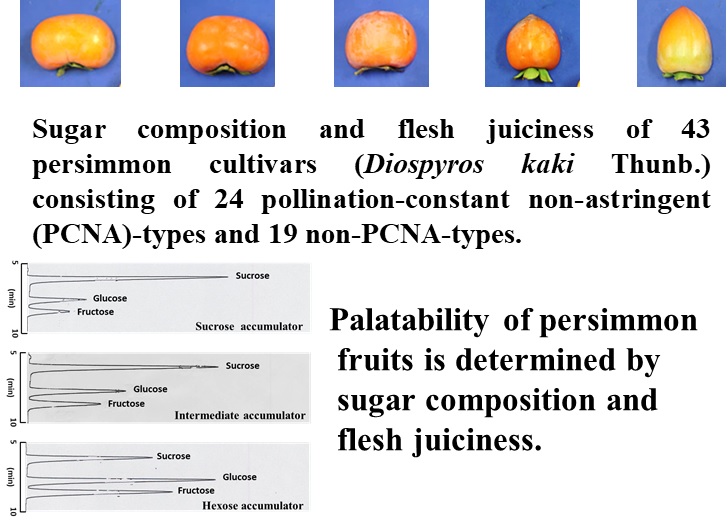
Published 2020-04-01
Keywords
- breeding stock,
- Diospyros kaki Thunb.,
- flesh juiciness,
- sweetness value
How to Cite
Copyright (c) 2020 Mikio Shiraishi, Hideaki Asakuma

This work is licensed under a Creative Commons Attribution 4.0 International License.
Abstract
To promote persimmon breeding project, we analyzed the sugar composition (a ratio of sucrose to hexose sugars, SH ratio) and flesh juiciness of 43 persimmon cultivars (Diospyros kaki Thunb.) consisting of 24 pollination-constant non-astringent (PCNA)-types and 19 non-PCNA-types, together with other fruit quality traits. The cultivar collection includes newly-released cultivars after 1990 and commercially-produced local cultivars in Japan. These cultivars were broadly classified into three types: sucrose accumulators, intermediate accumulators, hexose accumulators. Analysis of variance showed that the genotypic effect on the SH ratio and flesh juiciness is high with negligibly small environmental variance, indicating that SH ratio and flesh juiciness can be determined by a one-year trial without tree replication. Highly varietal diversity in the SH ratio and flesh juiciness was observed within and between persimmon cultivar types. Sweetness value (SSC × SH ratio) of the cultivars/selections seems to be a useful predictor of fruit sweetness. In terms of palatability, however, persimmon cultivar’s improvement should be performed on the sweetness value in association with flesh juiciness.




